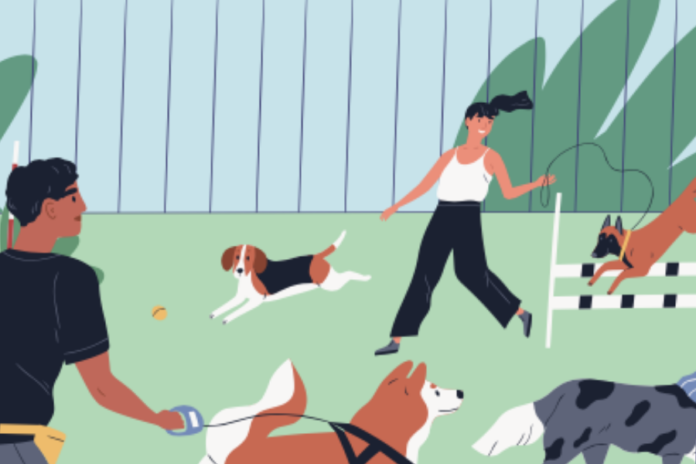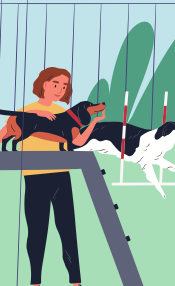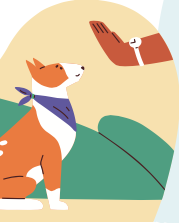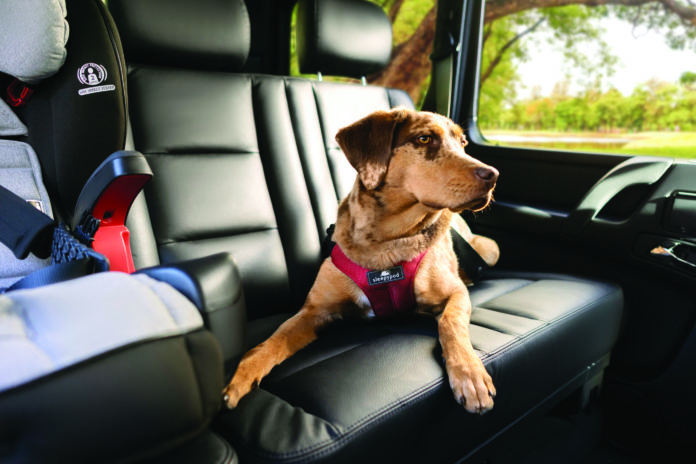Your hands-on guide for going to the dog park

Taking your canine companion to the dog park should be fun and safe for both of you. This guide offers all you need to know to ensure a positive experience.
Dog parks are increasingly popular and can be found in most urban areas now. Going to the dog park gives your pup an opportunity to romp around off-leash and socialize with other dogs, while you get a chance to meet like-minded people. Follow the tips in this article to make sure your visits to the dog park are a safe and positive experience for everyone.
IS YOUR DOG SUITED FOR DOG PARK VISITS?
1) Know your dog’s personality
Your dog should be well socialized with other canines and enjoy their company. If she merely tolerates other dogs, or prefers playing with only a few familiar friends, she will not enjoy a visit to a crowded dog park. The high-intensity play and changing group dynamics may be a stressful experience and cause her to be even more fearful and uncomfortable in future.
If you recently adopted your dog and don’t yet know his behavior, first allow him to gradually meet other dogs in more intimate settings to assess his behavior before taking him to the dog park. For example, take him on group walks with other dogs and allow him to play with a small number of dogs.
Tip: Many dog parks offer a separate area for small or timid dogs. Choose the appropriate section for your own pup.
 2) Consider any health concerns
2) Consider any health concerns
• Never take a sick or injured dog to the dog park. Not only could he pass disease along to other dogs, but if he’s feeling ill or in pain he may act aggressively.
• Puppies that haven’t yet received their core vaccines should never visit the dog park. They can contract dangerous and life-threatening diseases, such as parvovirus and distemper, through direct contact with infected dogs or feces.
• Be mindful of your senior dog and ensure his safety and comfort. Older dogs who suffer from age-related health problems, such as arthritis or loss of vision or hearing, are vulnerable around younger, more rambunctious canines.
3) Make sure he’s well-trained
Your dog should have a reliable recall — i.e. he will come when called. After teaching him this basic behavior, gradually add distractions to the training environment before you take him to the dog park, where distractions are everywhere. It is very important to be able to call your dog away from other canines in order to prevent a potential altercation.
GENERAL SAFETY TIPS AND DOG PARK ETIQUETTE
Be careful with treats and toys
Many dog parks specifically prohibit bringing food. Feeding your dog around other canines can lead to aggression when she tries to protect her valuable treats.
 Be mindful when entering the park
Be mindful when entering the park
When a dog is leashed around unleashed dogs, he can feel restricted and become defensive. Take advantage of the separate enclosed entrance space that most dog parks are equipped with, which allows you to safely unleash your dog before entering the park. The arrival of a new dog will often attract other canines to the entrance area. Wait for the dogs to disperse before entering. Once you’re in the park, move away from the gate into open space and encourage your dog to follow you.
Tip: If she likes to play fetch, make sure you play in an area away from other dogs to avoid fights over the toy.
Supervise kids at all times
Kids visiting dog parks must be closely and constantly supervised. They should not be allowed to play on the grounds or approach other dogs. Dog parks are designed to allow dogs to be dogs, and people should not have to worry about how their canines will react to a running or screaming child.
Clean up after your dog
Pay attention to your dog and immediately clean up after him to keep the park grounds clean and free from health hazards.
Interrupt play if necessary
Dog parks are highly stimulating, and intense play between aroused dogs may erupt into fights. When one dog is trying to get away from another’s excessive chasing or humping, it is time to intervene before things escalate. Some dogs like to roughhouse with each other, but make sure the dogs involved are truly enjoying this play style. Interrupt the roughhousing when you see tension rising.
Tip: One way to keep play sessions short is to keep moving. Allow your dog to play, then continue walking around to give her the choice of engaging with or avoiding dogs.
 Leave if necessary
Leave if necessary
If your dog is not having a good time, or is over-stimulated and becomes unruly — e.g. engaging in excessive chasing or showing aggressive behavior — it is time to leave. Everyone’s safety and enjoyment of the park takes priority.
Observe your dog
Just as you would keep an eye on your child on the playground, pay close attention to your dog at all times to keep him and others safe. Learning about canine body language will enable you to recognize stress signals. When you see any of these signs, your dog is not enjoying himself and it’s time to go:
- Trying to avoid contact with other dogs
- Tucked tail
- Crouched posture
- Stiff body
- Drooling
- Excessive panting (not because it is hot)
- Looking away
- Yawning
- Slow movements
Likewise, when you see others dogs displaying these behaviors, keep moving along with your dog to give them space.
Always consider your dog’s needs
Respect your dog’s personality and put his needs first. If he does not enjoy being around a large number of unfamiliar dogs, there are plenty of other ways to exercise and socialize him.
If your dog loves going to the dog park, it’s still a good idea
to offer other exercise options. Daily dog park visits can sometimes lead to over-stimulation and unruly behavior even outside the dog park.
Tip: Mix things up for a balanced lifestyle. Take your dog on regular walks, play with her, and allow for quiet time.
Going to the dog park is a great opportunity for your canine companion to exercise, play and socialize. As long as you consider her needs and take the appropriate safety precautions, it can be a lot of fun for both of you.



